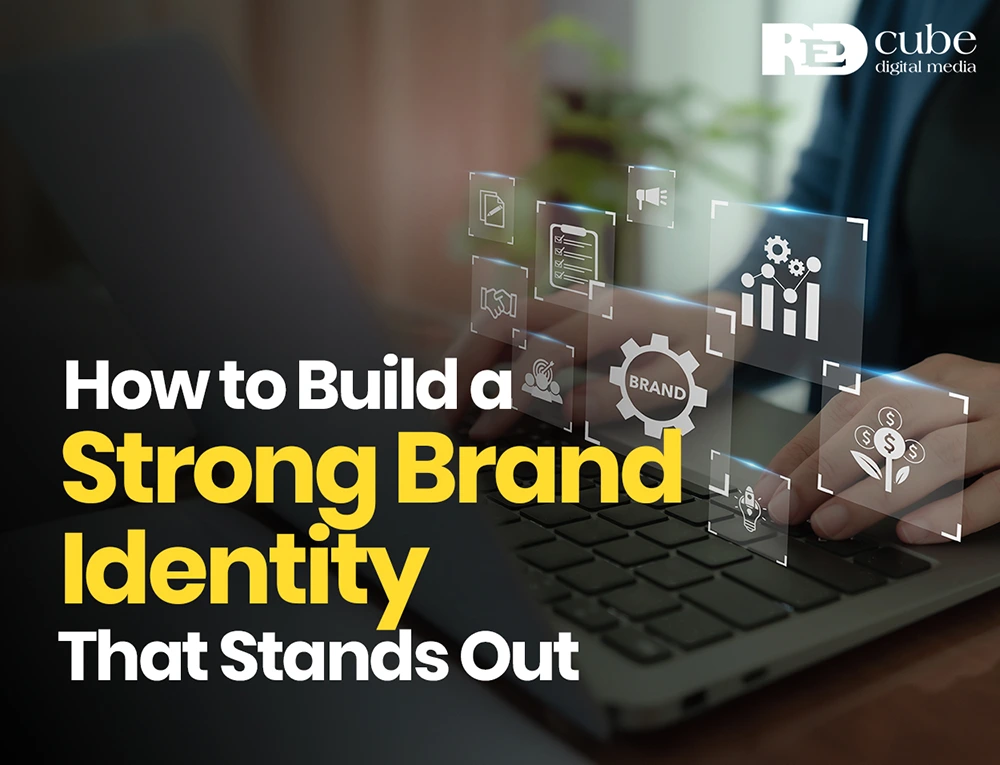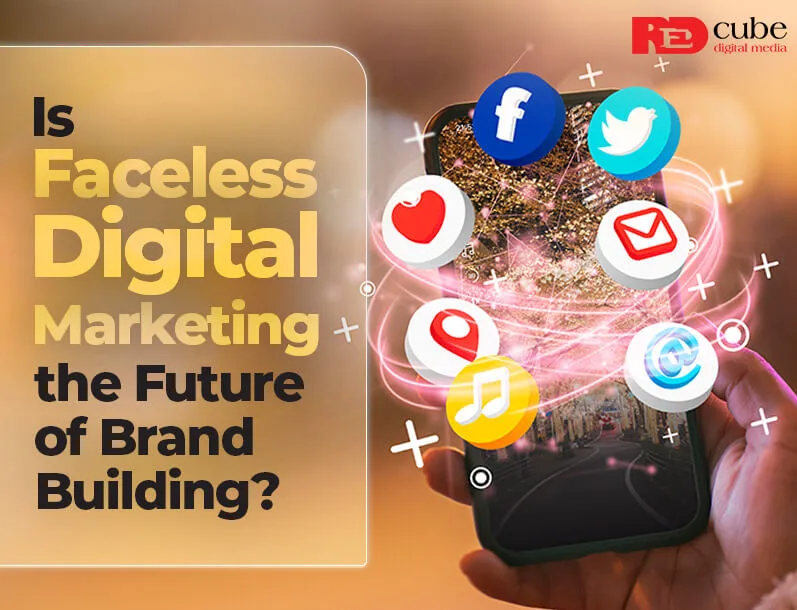Is your brand struggling to find a place in the ever-growing business space? Do you crave brand identity and doesn’t know where to start? Well, in today’s crowded marketplace, having a strong brand identity is crucial for any business, whether you’re a startup or an established company. Your brand identity is beyond a logo or a catchy tagline, it’s the overall perception people have of your business.
From the colors you choose to the tone of your communication, every detail shapes how customers feel about your brand. In this blog, we’ll dive into how you can create a brand identity that not only reflects your business values but also connects with your target audience in a meaningful way.
Why is Brand Identity Important?
A strong brand identity helps with:
- Differentiates you from competitors:
- Builds customer loyalty:
- Communicates your values:
- Establishes credibility and trust:
It sets you apart in a crowded market.
People gravitate toward brands they can identify with.
Your brand tells a story about who you are and what you stand for.
A consistent and professional brand builds confidence in your business.
Now that we’ve established the importance of brand identity, let’s look at how you can build one that resonates with your audience.
1. Understand Your Target Audience
The foundation of any brand identity is a clear understanding of your target audience. Knowing their needs, preferences, and pain points allows you to craft a brand that speaks directly to them.
How to do it:
- Conduct market research:
- Create customer personas:
Use surveys, interviews, or social listening tools to gather data on your audience.
Develop profiles that represent your ideal customers, focusing on their goals, challenges, and behavior.
Pro tip:The more you understand your audience, the more personalized your brand identity will be, increasing the chances of building loyalty.
2. Define Your Brand’s Core Elements
Your brand should have a strong foundation built on three key pillars:
- Purpose:
- Vision:
- Mission:
Why does your business exist? What problem are you solving?
Where do you want your business to be in the next 5-10 years? This is your long-term goal.
How are you going to achieve that vision? Your mission should be action-oriented, focusing on your short-term objectives.
For example, Nike’s purpose is to inspire athletes; its mission is to bring inspiration and innovation to every athlete in the world.
3. Develop a Unique Brand Voice and Personality
Your brand’s voice and personality should mirror your business’s values and resonate with your audience.
- Brand voice:
- Brand personality:
This defines how you communicate with your audience. Is your tone formal or casual? Are you humorous or serious?
If your brand were a person, what would they be like? Adventurous, friendly, or authoritative?
Consistency across all platforms is key. Whether it’s your website, social media, or email newsletters, your voice should remain the same. This builds recognition and trust over time.
4. Design a Visual Identity that Reflects Your Brand
Your visual identity includes your logo, colors, typography, and overall design elements that people will associate with your brand. This is often the first impression people have of your business, so it’s important to make it count.
Key elements of a strong visual identity:
- Logo:
- Color palette:
- Typography:
- Imagery:
A simple, memorable logo that reflects your brand’s values.
Colors convey emotions. For example, blue evokes trust and professionalism, while red symbolizes energy and passion.
Fonts should be legible and reflect your brand’s tone,serif fonts for a traditional feel, and sans-serif for modern or minimal designs.
Use visuals that align with your brand’s message, whether it’s photography, icons, or illustrations.
Pro tip:It is always better to Hire a professional designer to create a cohesive and professional-looking visual identity. This investment will pay off in brand recognition and credibility.
5. Create Consistent Brand Guidelines
Once you’ve defined your brand voice and visual identity, you need to ensure consistency across all your marketing channels. This is where brand guidelines come in.
What to include in your brand guidelines:
- How to use your logo (size, placement, variations)
- Color codes for your brand’s color palette
- Approved fonts for various types of communication
- Tone and style of writing
- Guidelines for photography, imagery, and graphics
Clear guidelines help internal teams and external partners maintain a unified brand image across every platform and interaction.
6. Implement Your Brand Across All Touchpoints
Once your brand identity is established, it’s time to roll it out across all customer touchpoints. This includes:
- Website:
- Social media:
- Product packaging:
- Customer service:
Ensure your website reflects your brand’s visual and verbal identity.
Use your brand’s voice consistently across all social channels.
Make sure the packaging aligns with your brand values and resonates with your target audience.
Train your team to embody your brand’s values in all customer interactions.
7. Monitor and Adapt Your Brand Identity Over Time
Building a strong brand identity doesn’t stop once you’ve implemented it. Over time, you should monitor your brand’s performance, listen to customer feedback, and make adjustments as necessary.
How to stay on track:
- Regularly review customer feedback to ensure your brand resonates with your audience.
- Keep an eye on your competitors and industry trends.
- Be open to making minor adjustments as your brand evolves, but ensure core elements stay consistent.
Building a Lasting Brand Identity
Creating a brand identity that stands out takes time, creativity, and a deep understanding of your business and audience. From crafting a unique brand voice to designing an unforgettable visual identity, every element should work together to tell a compelling story about who you are and why customers should choose you.
Your brand identity isn’t just a visual or verbal exercise—it’s how your business is perceived at every touchpoint. And when done right, it can be your most powerful asset in building trust, loyalty, and lasting customer relationships.
Ready to create a brand identity that resonates with your audience and drives growth? Contact Red Cube Digital today to get started on building a brand that stands out in the market.
FAQs:
How long does it take to create a brand identity?
The process can take anywhere from a few weeks to several months, depending on the complexity and research involved.
What’s the difference between brand identity and brand image?
Brand identity refers to the elements you create to represent your brand (logo, voice, color scheme), while the brand image is how your audience perceives your brand.
Can I change my brand identity later?
Yes, brands often evolve over time to stay relevant, but it’s important to do so carefully to avoid alienating existing customers.



